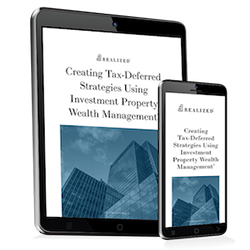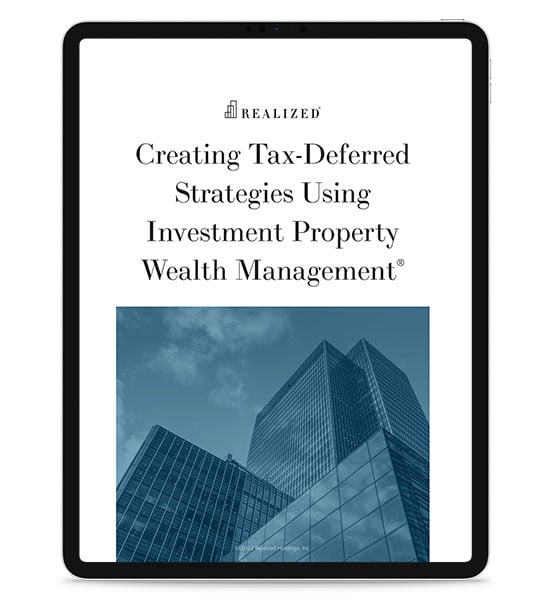
Property investors planning to sell their investment properties and reinvest through a 1031 exchange often focus on their next steps after deferring taxes. In the investment process, the After-Tax Cash Flow Timeline serves as a critical planning tool.
Realized uses this timeline to help investors visualize their real estate income across multiple periods, factoring in tax implications, cash flow projections, financing activities, and potential exit strategies. A clear understanding of this timeline empowers investors to align their financial goals with strategies for monthly income, long-term growth, and estate planning efficiency.
What Is the After-Tax Cash Flow Timeline?
Real estate investors may use the After-Tax Cash Flow Timeline to predict their estimated projected income streams from 1031 exchange properties in Delaware Statutory Trusts (DST) or other passive real estate investments. It accounts for:
- Cash flow distributions from the DST(s)
- Refinancing proceeds (if applicable)
- Tax liabilities, both deferred and ongoing
Real estate investments end with the distribution of final sale proceeds during the specified term. The timeline displays yearly income projections, which allows investors to develop better retirement plans and cash flow management strategies.
Key Milestones in the Timeline
-
Initial Investment (Year 0)
Your relinquished property sale occurs, followed by reinvestment through a 1031 Exchange. The investor distributes their equity across multiple DSTs. After completing the exchange, you will receive passive income while putting tax liabilities on hold.
-
Annual Cash Flow (Years 1–5+)
Most DSTs pay their investors monthly or quarterly distributions that typically yield 4% to 6% annual returns based on property characteristics, market conditions, and tenant stability. Regular income payments may serve as a helpful resource during retirement.
-
Refinancing Events (Optional)
A few DST strategies enable investors to refinance their properties after several years for possible one-time cash distribution. The tax-free receipt of equity distribution may impact future investment appreciation potential, but it does not create tax liabilities at the time of receipt.
-
Exit Timeline (Year 5–10)
The asset gets sold after the DST holds its property for its designated period. Investors receive their pro-rated share of the sale proceeds at the DST's termination unless they execute another 1031 Exchange to avoid tax liabilities on both original and new gains.
-
Estate Planning Considerations
When a DST owner passes away while still holding the investment property, their heirs receive a step-up in basis to the fair market value of the DST interest as of the investor’s date of death. This may eliminate previously deferred capital gains for income tax purposes, potentially reducing tax liability if the interest is sold immediately after inheritance.
Farm owners who plan to sell their properties should take advantage of 1031 Exchanges because these exchanges delay capital gains taxes and preserve the productivity of their wealth. The tax burden from selling appreciated farmland does not need to be paid directly because owners can redirect funds into new investments, which will continue to grow their capital instead of being diminished by taxes. The IRS has approved 1031 Exchanges as a tax deferral instrument that enables landowners to sell valuable farmland and purchase different income-generating real estate properties while postponing tax obligations. The replacement properties available through this exchange include traditional commercial buildings, multifamily housing, and fractional interests in diversified portfolios that provide steady income and reduced management responsibilities to those exiting active farm operations.
However, the DST interest is included in the investor’s taxable estate, and estate tax may still apply depending on the size of the estate and current exemption limits. For this reason, DSTs are sometimes used as part of a broader estate planning strategy, often in coordination with tools like Irrevocable Life Insurance Trusts (ILITs) or family limited partnerships.
Why It Matters
Through this timeline, you gain visibility into the future of your investment. The After-Tax Cash Flow Timeline is an investment planning tool that displays income streams, liquidity points, and tax events for better portfolio management decisions.
How Realized Can Help
Your personal Investment Property Wealth Management plan at Realized includes the After-Tax Cash Flow Timeline as a key analysis tool. This tool provides illustrative income projections and tax scenarios based on selected DST offerings, which may assist in assessing how different strategies align with your financial goals, risk tolerance, and estate planning considerations.
Want to see your After-Tax Cash Flow Timeline?
We will create a customized plan to guide your future developments.
The tax and estate planning information offered by the advisor is general in nature. It is provided for informational purposes only and should not be construed as legal or tax advice. Always consult an attorney or tax professional regarding your specific legal or tax situation.



